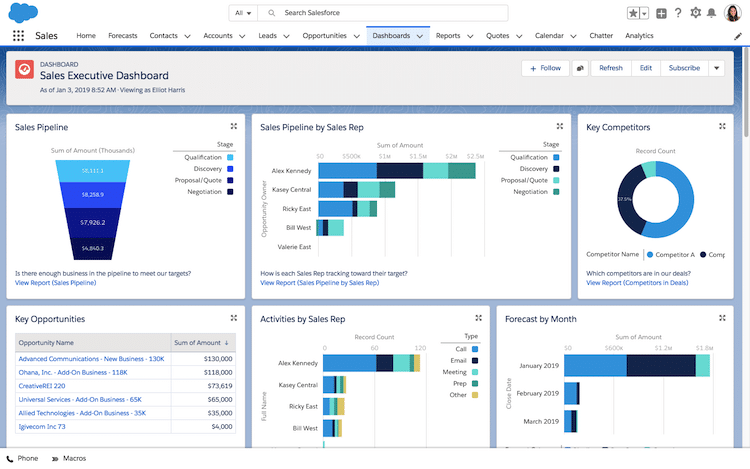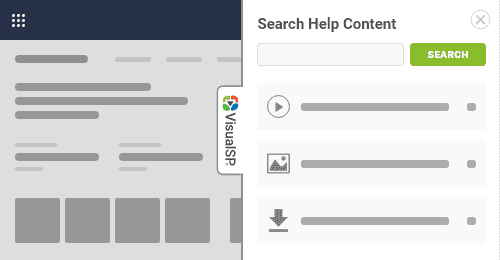
When it comes to picking the right CRM (Customer Relationship Management) software, two big names often pop up: Microsoft Dynamics CRM and Salesforce. These are tools that help businesses manage their customer information, sales, and more. In this post, we're going to compare Microsoft Dynamics vs Salesforce, looking at what they offer, their pros and cons, and how they can help your business.
CRM platforms keep track of your customer details, help your sales teams, and manage your customer service. With everything moving to the cloud (internet-based services), CRM tools have become even more powerful and useful.
Microsoft Dynamics 365 is more than just a CRM. It's part of a bigger set of tools from Microsoft. It's known for working well with other Microsoft products. It uses artificial intelligence to give you smart insights about your business and is great for customer service, field service, and marketing automation.

Salesforce, a leading name in CRM solutions, offers a cloud-based, easy-to-use platform. It's highly customizable and provides a variety of services, including tools for sales, customer service, and marketing.

When we put Microsoft Dynamics vs Salesforce side by side, here are some things to consider:
Salesforce is often praised for being easy to use. It has a clear and simple interface that people can understand quickly. This makes it a good choice for businesses that want a CRM that's straightforward to get started with.
On the other hand, Microsoft Dynamics might feel more familiar to users who already use Microsoft products. Since it works well with other Microsoft software, people who use these will find Microsoft Dynamics easier to use.
Both platforms use AI, but in different ways.
Microsoft Dynamics uses artificial intelligence to help businesses understand their customers better, make sales more efficient, improve customer service, personalize marketing, and predict future trends and customer needs.
Salesforce integrates artificial intelligence into its platform to enhance a variety of services, such as optimizing sales processes, automating customer service responses, personalizing marketing campaigns, and providing advanced data analysis and reporting.
Salesforce is particularly notable for its extensive customization options, allowing businesses to tailor the platform to their specific needs. From custom dashboards and reports to personalized workflows and user interfaces, Salesforce provides a high level of adaptability that sets it apart.
Microsoft Dynamics is flexible and can be adapted to different business needs. However, Salesforce is often seen as the top choice for customization. It has more features and tools that let businesses adjust their CRM system in more detailed ways.
If your business already uses Microsoft products, like Office 365 or Outlook, Microsoft Dynamics will work well with them. It integrates smoothly with these tools, streamlining operations and simplifying usage, particularly for teams already familiar with Microsoft's interface.
Salesforce, on the other hand, can also work with Microsoft tools, but it's mainly its own separate platform. It's not as closely linked to Microsoft products as Microsoft Dynamics is. You might need extra steps or different tools to connect Salesforce with Microsoft. Salesforce is good if your business doesn't rely heavily on Microsoft or if you want a CRM that stands on its own.
Here's a useful table that compares the two based on several features:
| Feature/Consideration | Salesforce | Microsoft Dynamics |
|---|---|---|
| User Interface | User-friendly, intuitive | Familiar for Microsoft product users |
| Customization | Highly customizable | Customizable, but less so than Salesforce |
| Integration | Standalone; can integrate with Microsoft products | Seamless integration with Microsoft ecosystem |
| AI and Analytics | Advanced analytics and AI features | Strong AI capabilities, especially with Microsoft AI tools |
| Sales and Marketing Tools | Extensive and robust | Comprehensive, with a focus on integration with other Microsoft tools |
| Customer Service | Strong capabilities with a focus on user experience | Strong, especially for businesses using Microsoft products |
| Pricing | Can be expensive, especially with add-ons | Varies, often lower than Salesforce for similar features |
| Ease of Setup and Training | Generally easier to set up and learn | May require more in-depth training |
| Cloud Services | Strong, cloud-first approach | Strong, particularly with Azure integration |
Pros:
Cons:
Pros:
Cons:
No matter which CRM platform you choose, learning to use it effectively is crucial. This is where VisualSP comes in.
VisualSP is a Digital Adoption Platform that helps users learn their CRM software faster. It offers in-context help and training right within the application, making it easier for teams to adapt to either Salesforce or Microsoft Dynamics CRM. This means less time learning the software and more time using it to benefit your business.


When deciding between Microsoft Dynamics CRM and Salesforce, consider what your business already uses, what you need, and how much you can spend. If your business already uses a lot of Microsoft tools, then Microsoft Dynamics is a smart choice because it works well with them. But if you're not already in the Microsoft world, Salesforce might be better with its strong customization and ease of use.
No matter which one you pick, tools like VisualSP can help your team learn and use these platforms more easily and quickly.
Fuel Employee Success